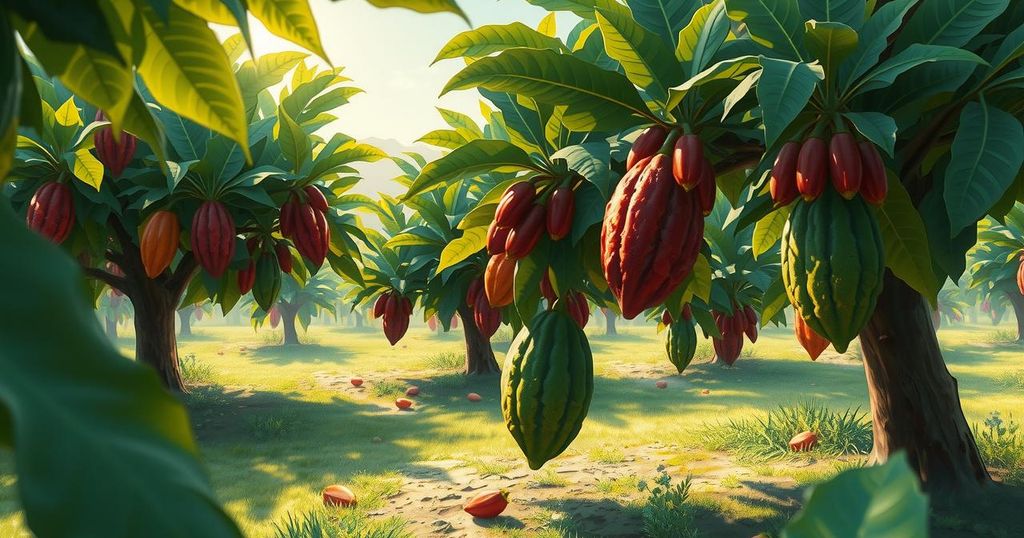Cocoa Prices Surge: Climate Change and Market Shifts Impact Chocolate Industry
Cocoa prices have soared due to production issues driven by climate change, reaching record highs before a drop. A forecast indicates a potential surplus next year, but challenges like dry weather and ageing crops persist. Farmers face tough choices, while innovations in chocolate alternatives are emerging from various companies.
Chocolate lovers are indeed facing a harsh reality as cocoa prices have surged dramatically in recent years. This spike in pricing is primarily due to ongoing production shortfalls, significantly influenced by climate change. A recent report from Al Jazeera highlights that West Africa, which is home to the world’s leading cocoa producers, has experienced a shift from extreme rainfall to severe drought conditions in just one year.
By December 2024, cocoa prices reached an unprecedented high of US$12,931 per metric ton before experiencing a rapid correction, dropping almost 37 percent to about US$8,200. According to the International Cocoa Organization, there is a projected global cocoa surplus of 142,000 metric tonnes for the 2024-2025 period, which would mark the first surplus in four years and potentially offer some price relief.
However, analysts caution that fundamental challenges persist. Carsten Fritsch, a Commerzbank analyst, warned that the dry weather that damaged last year’s harvest has the potential to affect this year’s crops similarly. The cocoa industry continues to be plagued by the issues of ageing trees and disease, especially in Ivory Coast and Ghana, countries responsible for nearly 60 percent of the world’s cocoa supply.
In response to these challenges, farmers in traditional cocoa-growing regions are making tough decisions. In Ghana, some have abandoned cocoa farming altogether, opting instead to sell their land to illegal gold mining operations, driven by the rising prices of gold. The plight of cocoa growers is sobering; most earn poverty-level wages, lacking the investment capacity to adapt to extreme weather patterns or to replace ageing cocoa trees.
Meanwhile, Brazilian farmers are pursuing an alternative strategy. Thanks to greater financial resources, they are establishing large-scale, full-sun cocoa farms, which could transform the industry if successful. However, as one government scientist pointed out, intensive use of cloned plants may lead to increased vulnerability to disease, compounding existing concerns.
Cocoa manufacturers are also innovating in the face of this crisis. For instance, Cargill has teamed up with Voyage Foods to create cocoa-free chocolate bars made from grape seeds, sunflower flour, and various flavorings. Startups like Nukoko and Planet A are developing alternatives that replicate the taste and aroma of traditional chocolate.
On the other hand, established brands like Mars have opted for a more straightforward approach: raising prices while reducing product sizes to maintain profitability.
In summary, the surge in cocoa prices, largely driven by production shortfalls and climate change, poses significant challenges for both farmers and manufacturers alike. While some regions are seeking innovative solutions, the overall industry grapples with pressing issues such as ageing trees and economic instability for growers. As companies experiment with alternatives and adjust their strategies, the future of chocolate consumption hangs in the balance.
Original Source: macaonews.org




Post Comment